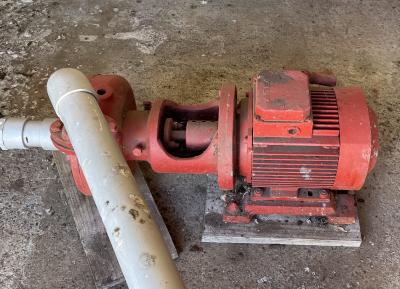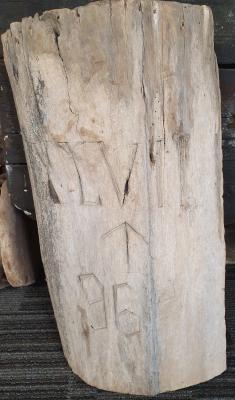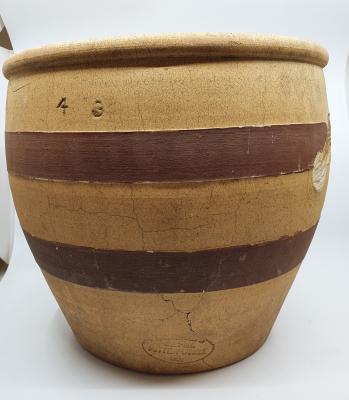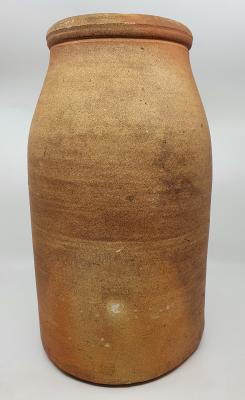Blain Wagon
The Blain Wagon is a single horse lorry. It would have started life as a normal table top wagon until its owner Jim Blain modified it extensively by swapping out the original axles and wheels with truck parts. These modifications enabled the lorry to be used on bitumen roads and also lowered the tray for easy access.
The large tray consists of a timber construction, which measures 11’4” length x 5’6 wide plus the front footboard. The timber shafts to secure a horse appear intact and iron wheels with tyres and a seating box at the front of the dray allow the wagon to remain operable.
It carries 6” or 15 cm jarrah boards running across the vehicle and is surmounted with a heavy iron frame bordering the ‘floor’ of the wagon. The iron frame appears to have been removed at some stage possibly to allow for the replacement of deteriorating boards with narrower 4” or 10 cm planks and reinstated using a number of galvanised bolts to secure the infrastructure in place. The remnant 6” boards have been chamfered in order to allow the framework to fit the various dimensions of the boards. The original 6” boards would have been stronger during the period that the dray was used to carry heavy loads and would have proved difficult to replace during the conservation works in 2005.
A turntable underneath the carriage of the front section of the dray appears to be made from the remnants of a truck axel and has been added to assist the single dray horse to attain a tighter turning circle. Springs were installed and along with pneumatic tyres, ensured that the ride was steady and the cargo arrived safely.
A seating box mounted on the front of the dray is painted brown with rope handles and exhibits a faded painting on the inside of the lid. The topic appears to follow a maritime theme and is not deemed to be original to the dray. Original paintwork is extant on the undercarriage and clearly exhibits red paint covered later with yellow. These colours were used to sign write the side of the tray with the words ‘J. Blain General Carrier Tel 154’.
General Carrier Jim Blain and his delivery wagon would meet the train on its arrival at the railway station in Busselton and pick up cargo for transporting to local businesses. He also transported luggage for holidaymakers from the Midland Railways Workshops and mine workers from Collie and dropped their gear off at the holiday campsites in Busselton. Now and then the travellers would ‘catch’ a ride on the delivery wagon to the campsites near the jetty. Often James would store the holidaymaker’s equipment until their arrival the following week, or sometimes even held their gear until the holiday period the following year.
Jim Blain and his Wagon operated locally for many years and made regular appearances in local street parades in Busselton. They were photographed in a local parade held in Queen Street with Brownies and Girl Guides ‘on board’ to mark the arrival of Queen Elizabeth to Busselton on 30 March 1954.
Details
Details
Blain’s Delivery Wagon was built for James Blain in the 1920s to transport goods around the town of Busselton. James lived at 62 Duchess Street and operated his business from the rear of his home, where he had stables to house his horse. Jim also owned a property on Causeway Road where the St. John Ambulance Depot is now situated. He is known to have had an interest in trotters as district records show that he had horses for sale in November 1946. Jim ran his transport business for many years until the competition became too much when two new carriers started up with trucks, at which time Jim and the horse retired!
James’ daughter Mary remembers that ‘there was only ever one owner of the delivery wagon and one horse used to pull it’. According to Mary, when her father died in 1959 and the family home was taken over, the cart was passed on to Doug Feutrill at Westbrook Homestead. On the sale of his property, Doug had asked Mary Pross what she felt should happen to the cart. Interestingly at the time, Mary was unaware that the wagon still existed, however the suggestion was made that it should be donated to the BHS. By this time the wagon had badly deteriorated and BHS members George Reynolds, Lionel Jones and Ivan Fleay took on the task of repairing the vehicle ‘back to its original condition.’ According to Mr Reynolds ‘the object was to keep the wagon as original as when Mary’s dad used it’. The group met each Tuesday at the Butter Factory and took about 6 months to complete their work on the dray.
Other items from Busselton Historical Society
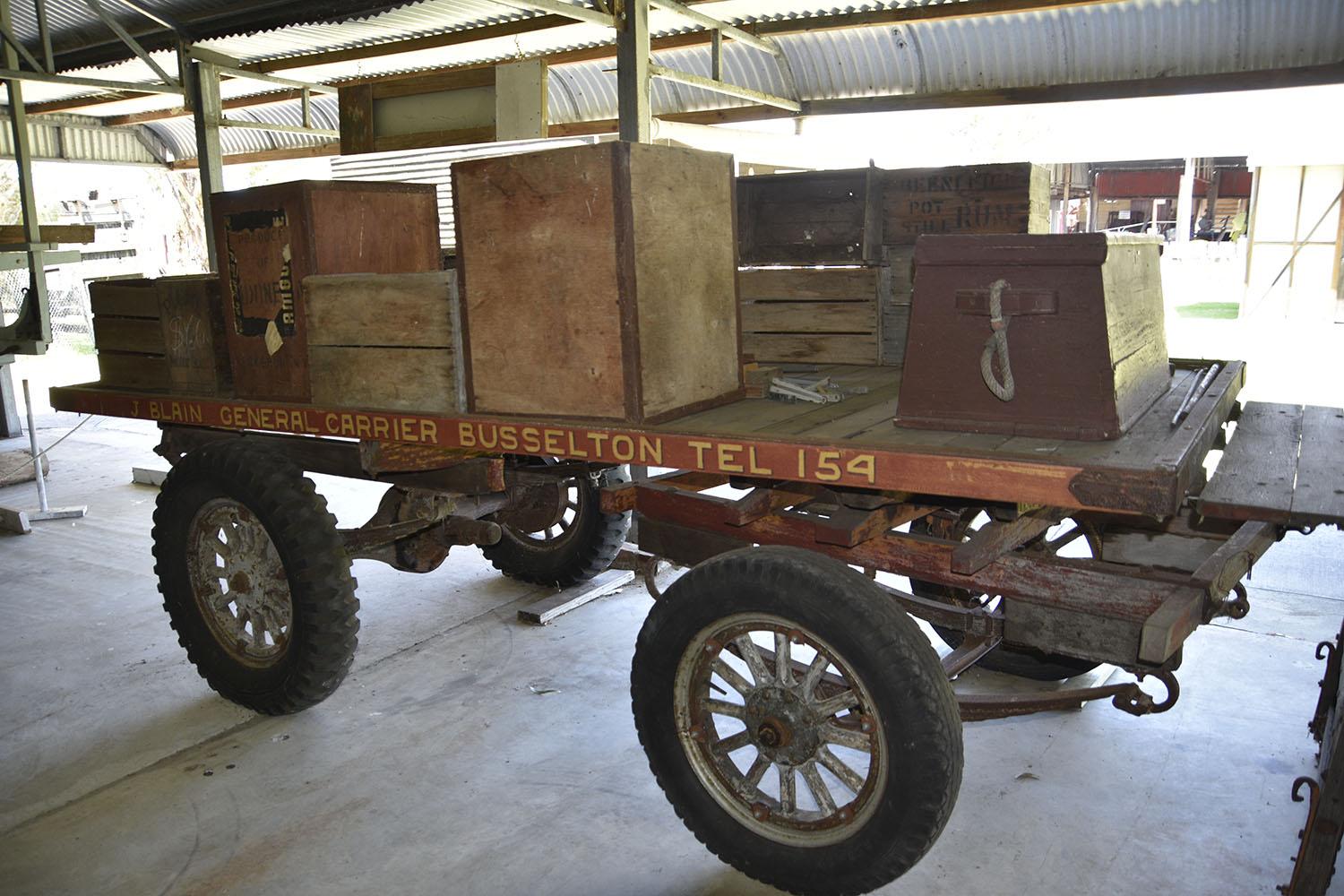
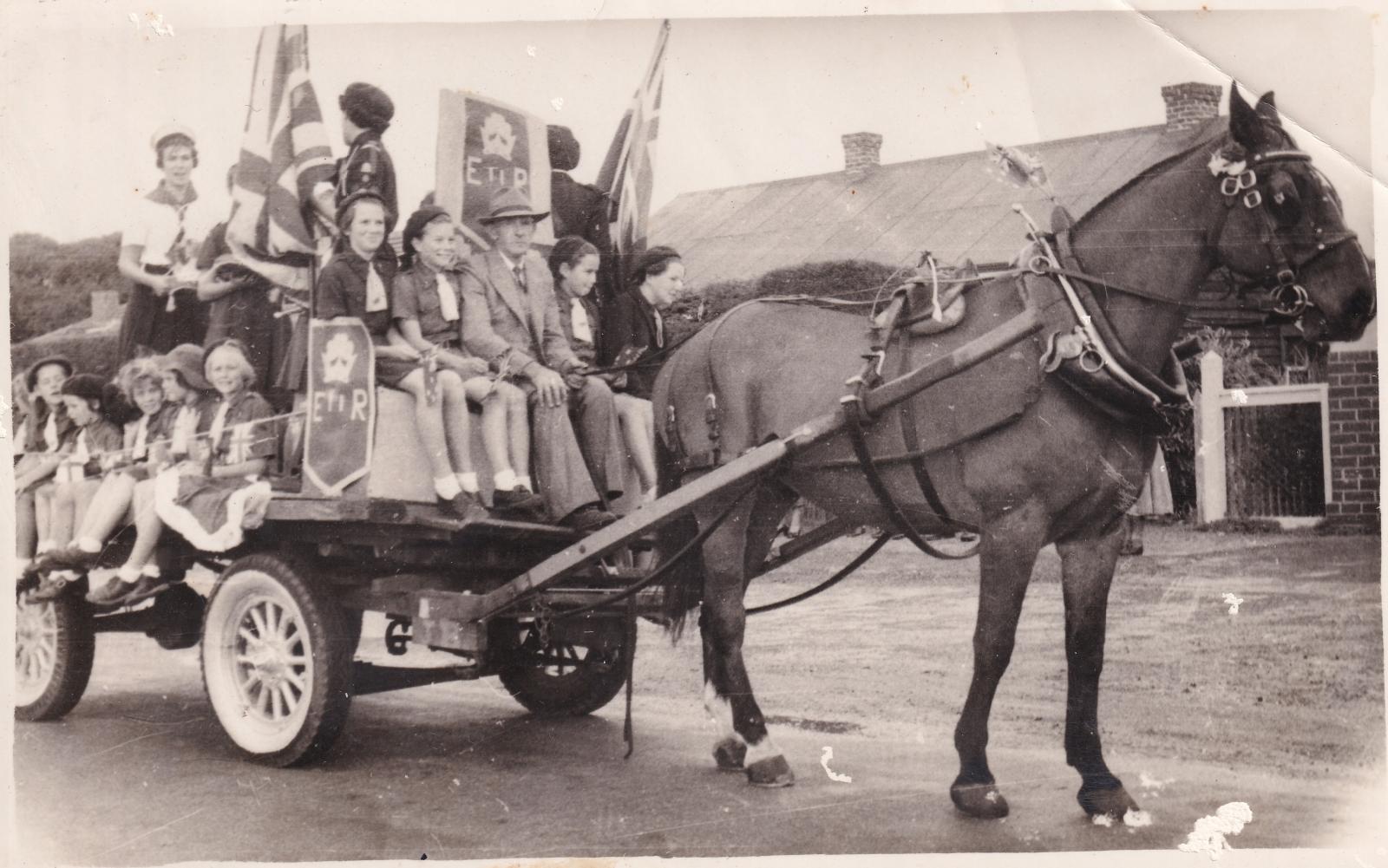
Scan this QR code to open this page on your phone ->

